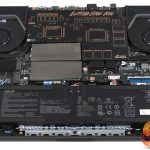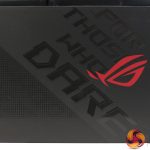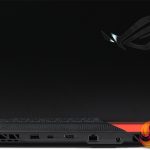
In 2020 we loved the ASUS ROG Zephyrus G14 with an AMD Ryzen 4000 CPU and Nvidia RTX 2060 graphics. Today we have the ASUS ROG Strix G15 Advantage with AMD Ryzen 5000 CPU and AMD Radeon RX 6800M graphics, and not a hint of Nvidia anywhere to be seen. This is pure AMD from end to end and the discrete graphics deliver a slice of the RDNA 2 technology we saw in desktop RX 6800.
The ASUS ROG Strix G15 Advantage Edition is built, as the name suggests, around the AMD Advantage framework. This is a guide for laptop manufacturers to ensure they marry an AMD CPU with AMD RDNA 2 graphics and other high end components such as a decent display panel, fast SSD and fast Wi-Fi.
Specification
- Processor: AMD Ryzen 9 5900HX 3.3GHz up to 4.6GHz
- Graphics: AMD Radeon RX 6800M 12GB GDDR6
- Display: 15.6-inch FHD, 300Hz Refresh, 3ms Response, IPS-level, FreeSync
- Memory: 16GB DDR4-3200 SO-DIMM dual channel, Max Capacity 32GB
- SSD: 512GB Samsung PM991a M.2 NVMe PCIe Gen 3.0
- I/O Ports:
- 1x 3.5mm Combo Audio Jack
- 1x HDMI 2.0b
- 1x USB 3.2 Gen 2 Type-C support display/power delivery
- 3x USB 3.2 Gen 1 Type-A
- 1x RJ45 LAN port
- Networking: Realtek Gigabit
- Wi-Fi: MediaTek Wi-Fi 6 MT7921+Bluetooth 5.1
- Speakers: 2x 4W speaker with Smart Amp Technology
- Battery: 90Wh, 5675mAh, 4-cell Li-ion
- Power Supply: 280W
- Weight: 2.3kg plus 1.0kg for power adapter and mains cable
- Dimensions: 354mm (W) x 259mm (D) x 22.6-27.2mm (H)
- Operating System: Windows 10 Home
The external appearance of the ASUS ROG Strix G15 Advantage Edition is very smart with red accents and highlighted WASD keys that act as prompts for gamers. Internally it is a completely different matter as the vapour chamber cooling system on the CPU and GPU looks amazing. We have never before seen a laptop cooler that uses graphics to mark out the CPU and GPU with their associated components and feel it is a crying shame most owners of this laptop would be oblivious to this detail.
The ports and connectors are mainly arranged on the rear of the chassis. On the left hand side we find two USB ports and a headset jack, while the right hand side is unused. Glance back to that photo inside the chassis and you will see this means most of the connections are very close to the CPU and GPU while the slower USB and headset connections are located much further away. We prefer it when laptops have the connections conveniently located on the sides but once you look inside the chassis it is crystal clear why ASUS has adopted this particular layout.
 KitGuru KitGuru.net – Tech News | Hardware News | Hardware Reviews | IOS | Mobile | Gaming | Graphics Cards
KitGuru KitGuru.net – Tech News | Hardware News | Hardware Reviews | IOS | Mobile | Gaming | Graphics Cards














